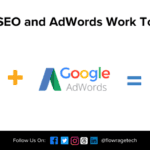Imagine your website content as a hidden treasure, waiting to be discovered by eager explorers—is it well-mapped out?
Here’s the real kicker. Your written words have the power to entice and guide those explorers to your site, like a beacon shining in the digital ocean. Crafting masterful copy isn’t just an art; it’s a strategic element of SEO that, when honed to perfection, can significantly amplify your online presence, making sure the right eyes find the treasure they seek.
Crafting SEO-Driven Headlines
Headlines are the lighthouses of content seas, shining bright for search engines and users alike. An SEO-driven headline must be captivating yet concise, incorporating keywords strategically without compromising readability. Creating a balance between enticing readers and satisfying search algorithm requirements is critical to increase the visibility and click-through rate of your content.

To master this balancing act, consider the searcher’s intent and weave it into a headline that promises value. Keep it under 60 characters to ensure full visibility on search engine results pages (SERPs), making every word count towards attracting both readers and search engine crawlers.
Importance of Keyword-Rich Headers
Keyword-rich headers are SEO catalysts—harnessing visibility by guiding search crawlers to their topical havens.
Strategically positioned keywords and header tags enhance search visibility; they’re the compass of content navigation.
Incorporating relevant keywords in headers helps search engines understand the content’s context, making it easier to rank for targeted queries and themes.
Headers are navigational signposts for readers and search bots—emphasize key topics and improve user engagement with methodical keyword integration.
When it comes to SEO copywriting strategies, clarity and conciseness are key. In order to make your content easier to read and understand, here are some tips to follow:
- Use short sentences: Long, complex sentences can confuse readers and make your content difficult to follow. Opt for shorter sentences that get straight to the point.
- Break up paragraphs: Large blocks of text can be overwhelming for readers. Break up your content into smaller paragraphs to make it more visually appealing and easier to digest.
- Use headings and subheadings: Headings and subheadings not only help organize your content, but they also make it easier for readers to scan and find the information they’re looking for.
- Use bullet points and numbered lists: Bullet points and numbered lists are great for presenting information in a clear and concise manner. They help break up text and make it easier for readers to understand key points.
- Avoid jargon and technical terms: While it’s important to showcase your expertise, using too much jargon and technical terms can alienate your readers. Try to explain complex concepts in a simple and accessible way.
- Use transition words: Transition words and phrases help guide readers through your content and make it flow more smoothly. Examples include “however,” “in addition,” and “on the other hand.”
- Proofread and edit: Before publishing your content, make sure to proofread and edit it for any grammatical or spelling errors. This will ensure that your content is clear, professional, and easy to read.
By implementing these strategies, you can improve the clarity and readability of your SEO copywriting content, making it more engaging and effective for your target audience.
Balancing Click-Worthiness and Relevance
Crafting headlines that magnetize clicks without misleading requires a deft touch; enticing promise should match content’s true value, striking a balance that rewards reader trust.
Ensure headlines are engaging, but stay true to your content’s substance. Blend curiosity with honesty for lasting impact.
Moreover, using power words can enhance appeal, so long as alignment with content (ensuring a truthful lead) remains intact.
Also Read: The Ultimate Guide To Boost Your Website’s Rankings Like a Pro With SEO
Headlines should be a preview of content’s depth and relevance, not misleading bait; align excitement with educational value to gain respect and readership.
It’s vital to evoke intrigue in your headers, but never at the cost of relevance. Over-promising leads to disappointment, which in turn harms brand trust and search rankings over time.
Remember, the goal is to align reader’s expectations with content’s delivery. Ethical copywriting bridges initial curiosity to valuable, satisfying content experiences.
Optimizing Content for Search Engines
Optimizing content for search engines doesn’t mean packing paragraphs with keywords to the brim. Effective SEO copywriting hinges on striking a balance between relevance and keyword integration, ensuring the content resonates with user intent and search algorithms alike. To achieve this, carefully select keywords that align naturally with the topic, and weave them into your content in a way that enhances readability and authority. Remember, search engines prioritize content that provides genuine value, so maintain a user-centric approach while subtly aligning with SEO best practices.
Strategic Keyword Integration
When it comes to SEO, strategic keyword integration is crucial. Your choice and placement of keywords can significantly impact search visibility.
Incorporating keywords seamlessly into your content supports both user experience and SEO. It avoids disrupting readability while signaling relevance to search engines. Select terms that are not only popular but also highly relevant to your content’s subject matter.
Remember, keyword stuffing is an antiquated practice that can penalize your site. Instead, aim for natural inclusion of keywords within valuable context. This maintains the integrity of your content and pleases search algorithms.
The ideal keyword density varies, but generally hovers around 1-2%. This strikes the right balance between optimizing for search engines and ensuring a pleasant reading experience for your audience.
Lastly, diversifying your keyword strategy with long-tail phrases captures more nuanced search queries. This often leads to higher conversion rates, as the traffic comes from more specific searches.
Utilizing Latent Semantic Indexing
Latent Semantic Indexing (LSI) isn’t just about synonyms; it encompasses contextually related terms that provide depth to your content’s theme. By integrating LSI keywords, you facilitate a better understanding of your content’s relevance, which can improve your SEO results.
LSI keywords help search engines discern context and meaning. They mitigate the risk of being misinterpreted and enhance the content’s semantic richness.
Essentially, LSI keywords act as a support network for your main keywords. They contribute additional clarity (think synonyms and related phrases) that enriches user and search engine comprehension.
Integrating these related terms helps combat keyword stuffing. Instead of repeating the same phrases, LSI allows for a more varied linguistic palette, keeping the content engaging and semantically dynamic.
Knowing when to use specific LSI terms helps to strengthen the narrative around your main keyword. It’s a strategy that effectively captures the nuances of language, improving your chances to rank for various relevant queries within your niche.
Moreover, LSI can help in differentiating your content’s intent from others’. Carefully selected related terms can guide algorithms towards a more accurate representation of your content’s purpose and topic.
Enhancing User Engagement
High-quality content not only informs but also engages. This dual focus magnifies users’ time spent on site, which can signal relevance and quality to search engines.
By weaving storytelling elements with data-driven insights, copywriters create a resonant user experience that encourages deeper interaction, sharing, and return visits—a trifecta that boosts SEO efforts.
Remember, engaging content often translates into increased social signals and backlinks—key components in amplifying online visibility and domain authority.
Readability and Structure
Readability can make or break content effectiveness.
Users typically skim content for valuable information, often on mobile devices. To reach and retain your audience, complex ideas must be distilled into easy-to-digest sections. Headings, subheadings, and bullet points serve to break up text, providing entry points for readers and allowing for better comprehension. Importantly, these breaks also assist in guiding search engine crawlers through your content, enhancing the likelihood of ranking for targeted terms.
Short paragraphs keep reader attention.
Using varying sentence lengths adds rhythm to the prose—too many long sentences can overwhelm, while too many short ones can seem choppy. Aim for a mix, offering readers a more enjoyable reading experience that they’re likely to engage with for longer periods. This engagement is monitored by search engines and can contribute to content rankings.
Bullet points clarify complex ideas.
Effective structure in your content promotes usability and accessibility, crucial for the positive user experience Google prioritizes in its 2023 updates. Clear headings enable readers to navigate through your content more easily, while concise sentences facilitate rapid understanding, essential for usability across global audiences with varying levels of language proficiency.
Adding Value with Meta Descriptions
Meta descriptions are a small, yet pivotal piece of the SEO puzzle, serving as ad copy for your web page in search results, enticing users with a succinct summary of the content.
They can influence click-through rates from search engine results pages (SERPs).
Therefore, crafting meta descriptions with care is essential for both users and search engines, promoting clarity (with calls to action and unique selling points) and relevance.
A well-crafted meta description should mirror the page’s content accurately, ensuring expectations are met upon clicking, reducing bounce rates and boosting user satisfaction.
When writing meta descriptions, it’s beneficial to include targeted keywords naturally, enhancing visibility in search engines and resonating with users searching for content that meets their needs and interests.
However, avoid overstuffing with keywords; user’s trust and experience should remain at the forefront, creating harmonious balance between SEO optimization and user-friendly messaging.
Measuring SEO Copywriting Success
To gauge the effectiveness of SEO copywriting, a sharp eye on key performance indicators (KPIs) is critical. Metrics such as organic traffic growth, search engine rankings for targeted keywords, and conversion rates furnish tangible evidence of the value produced by well-crafted content. Continual monitoring and analysis pave the way for refined strategies that can cater to ever-evolving search engine algorithms and user behavior.
Furthermore, assessing the quality and relevance of traffic generated through SEO efforts is just as vital as quantity. Using tools like Google Analytics offers insights into visitor behavior, such as time spent on page and bounce rates. These indicators help discern whether the content resonates with the audience and fulfills their search intent. Evaluating these metrics over time enables the fine-tuning of SEO copy to amplify engagement, cater to user needs, and ultimately drive successful outcomes.
Key Performance Indicators
Click-through rate (CTR) stands as a paramount metric, signaling the appeal of title tags and meta descriptions in search results.
Engagement metrics, like average session duration and pages per session within analytics platforms, deliver a granular look at user interaction. They reveal the extent to which content captivates audiences, keeping them on-site and interacting with multiple pages, crucial for bolstering site authority and user experience. Rich, informative content drives these numbers up, serving as a proxy for content quality and relevance.
Social shares and backlinks are telling indicators of content’s reach and authority. A high volume of shares and organic backlinks underline the content’s value and resonance with the audience. Moreover, they reinforce domain authority, which search engines consider when determining rankings.
Ultimately, lead generation and conversion rates are the linchpins of successful SEO copywriting endeavors. They quantify how effectively content moves users along the sales funnel. Tailoring content to various stages of the buyer’s journey and including persuasive calls-to-action increase conversion likelihood. Tracking these KPIs places emphasis on the end goal of SEO copywriting—driving profitable customer action.
Adjusting Strategy with Analytics Feedback
Analytics serve as the litmus test, revealing the efficacy of your copywriting and guiding iterative improvements. Data doesn’t lie, and it continually informs the SEO landscape, shaping the best practices that underpin high-ranking content.
Adopting a data-informed approach allows for agile adjustments, aligning copywriting to respond dynamically to user behavior insights. Pageviews, bounce rates, and time on page highlight immediate areas for improvement, signaling when content fails to hook readers as intended.
However, these metrics only scratch the surface. Diving deeper, engagement metrics such as scroll depth and interaction rates provide nuanced understanding. They inform the copywriter on whether the content is compelling enough to encourage readers to digest it in its entirety.
Conversion tracking is equally crucial. It’s imperative to understand not just how many users take action, but also which elements of the content contribute to their decisions. A/B testing different copy strategies lends precision to this practice, enabling optimization at a granular level.
Ultimately, analytics feedback should not be an afterthought but a cornerstone of an SEO copywriting strategy. It influences iterations that refine and enhance content’s performance, substantiating the powerful role of words in the digital domain.
SEO Copywriting: Measuring Success with Analytics Feedback
In the world of digital marketing, SEO copywriting plays a crucial role in driving organic traffic and improving search engine rankings. By crafting high-quality that incorporates targeted keywords, digital marketers and SEO professionals can enhance visibility in search engines and resonate with users searching for content that meets their needs and interests. However, it is important to strike a balance between SEO optimization and user-friendly messaging, avoiding keyword overstuffing and prioritizing user trust and experience.
To gauge the effectiveness of SEO copywriting, it is essential to keep a sharp eye on key performance indicators (KPIs). Metrics such as organic traffic growth, search engine rankings for targeted keywords, and conversion rates provide tangible evidence of the value produced by well-crafted content. Continual monitoring and analysis pave the way for refined strategies that can cater to ever-evolving search engine algorithms and user behavior.
In addition to quantity, it is crucial to assess the quality and relevance of traffic generated through SEO efforts. Tools like Google Analytics offer insights into visitor behavior, such as time spent on page and bounce rates. These indicators help determine whether the content resonates with the audience and fulfills their search intent. Evaluating these metrics over time allows for the fine-tuning of SEO copy to amplify engagement, cater to user needs, and ultimately drive successful outcomes.
Several key performance indicators are particularly important in analyzing the effectiveness of SEO copywriting. Click-through rate (CTR) signals the appeal of title tags and meta descriptions in search engine results pages (SERPs). A high CTR indicates that the copy is compelling and to users’ search queries. It is essential to optimize title tags and meta descriptions with targeted keywords and persuasive language to encourage click-throughs.
Another critical metric is the bounce rate, which measures the percentage of visitors who leave a website after viewing only one page. A high bounce rate suggests that the content does not meet users’ expectations or fails to engage them. To reduce bounce rates, SEO copywriters should focus on creating captivating headlines, clear and concise content, and seamless user experiences.
Time on page is another valuable metric that reflects how long users spend engaging with a piece of content. A longer time on page indicates that the copy is engaging, informative, and valuable to users. SEO copywriters can optimize time on page by including relevant and compelling visuals, breaking up content into digestible sections, and incorporating interactive elements.
Conversion rate is perhaps the most crucial KPI for SEO copywriting. It measures the percentage of visitors who complete a desired action, such as making a purchase or filling out a form. To improve conversion rates, copywriters should create persuasive and compelling calls-to-action, provide clear instructions, and address any objections or concerns that users may have.
In conclusion, measuring the success of SEO copywriting requires careful monitoring and analysis of key performance indicators. By tracking metrics such as organic traffic growth, search engine rankings, bounce rates, time on page, and conversion rates, digital










